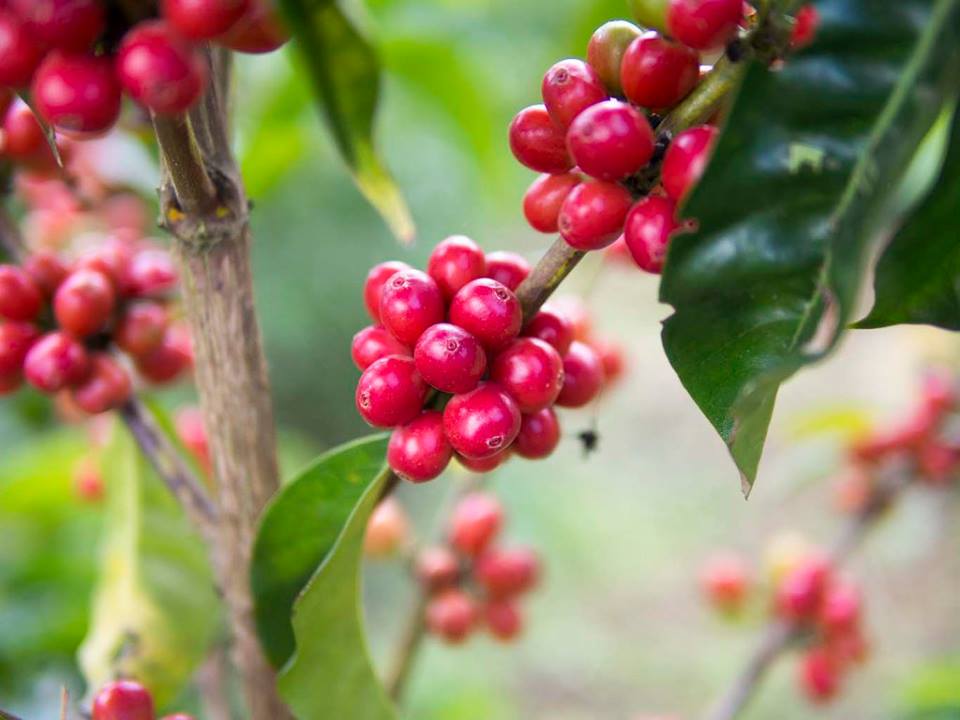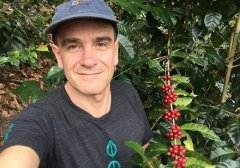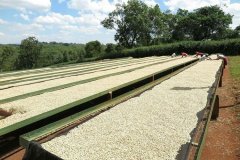The origin of Guisha coffee: Geisha origin and the process of international fame Guisha coffee famous manor

For professional baristas, please follow the coffee workshop (Wechat official account cafe_style)
The coffee bean species Rose Xia (also known as geisha) is the original species of Arabica. It is very difficult to cultivate and the yield is half that of other coffee beans. Are rare, high-value coffee beans.
1931: a team of botanists visited southwestern Ethiopia and discovered rose beans near the village of Geisha. They brought Geisha seeds to Kenya and planted them in nurseries.
1936: Geisha seeds spread to Uganda and Tanzania.
1953: CATIE, a Costa Rican research institute, obtains some Geisha seeds from Tanzania for research.
1960: Pachi Serracin, the old owner of Don Patch Manor in Panama, brings Rose Summer Geisha to Panama from Costa Rica.
2004: best Panama BOP (Best of Panama auction), Emerald Manor won the first place of the year by virtue of its rosy summer. In the next ten years, as long as you participate in the exhibition, you will get a big prize.
2007: in the international famous bean cup test competition featured by American boutique coffee (SCAA), Rosa won the championship again, and the bidding price was sold at US $130 per pound, the highest price since the competition beans.
2008: Jade Manor opens its own bidding meeting (BOP did not participate in the competition that year).
2012: best Panamanian BOP (Best of Panama auction), divided into traditional group, Geisha group and tanning group, so as not to be stolen by Geisha in all beans during the competition.
2014: best Panama BOP (Best of Panama auction), subdivided into geisha tanning, geisha washing, traditional tanning, traditional washing, because geisha will still steal the beauty of the tanning group.
2015: best Panama BOP (Best of Panama auction), divided into winning group sunburn, winning group water washing, traditional tanning, traditional washing, allowing another excellent variety, Pacamala Pacamara, to join the competition, but the result was bleak, with only one batch of 32 batches shortlisted.
2005: best Panama BOP (Best of Panama auction): $20.10 (first batch)
2006: best Panama BOP (Best of Panama auction): $50.25 (first batch)
2007: best Panama BOP (Best of Panama auction): $130 (first batch)
2008: La Esmeralda Jade Manor auction: $105.25
2009: La Esmeralda Jade Manor auction: $117
2010: best Panama BOP (Best of Panama auction): $170
2011: best Panama BOP (Best of Panama auction): $75.25 (No. 1 in the washing group) and Don Pachi Geisha in the tanning group ($111.5)
2012: La Esmeralda Jade Manor auction: $66 (did not participate in BOP that year)
2013: best Panamanian BOP (Best of Panama auction): $350 (No. 1 in Sunshine Group, won by Japan)
2014: La Esmeralda Jade Manor auction: $105.5
2015: La Esmeralda Jadeite Manor auction: $131( third batch) / $122.01 (first batch)
Best Panama BOP (Best of Panama auction): $140.01 (Sun Geisha Champion)
Important Notice :
前街咖啡 FrontStreet Coffee has moved to new addredd:
FrontStreet Coffee Address: 315,Donghua East Road,GuangZhou
Tel:020 38364473
- Prev

The rose summer coffee on the slope of Balu Mountain at an altitude of 1500 meters is precious not in price, but in its value.
Professional barista communication please follow the coffee workshop (Wechat official account cafe_style) are you tasting the rose summer drink growing on the slopes of Mount Balu 1500 meters above sea level? the first time you heard the name of Rose Summer, or from friends who do not drink coffee very much, she said that she was surprised by heaven and earth after drinking it, and then bought it herself to try it. Besides being delicious, another feeling is expensive! Rose Xia Yi
- Next

Yerga Shefi Region Kocher Miniature Region 50 bags only Microbatch Kohl G1 Coffee Flavor Description
YirgaChefe region Kochere micro-region Cole G1 coffee flavor description Only 50 bags of micro-batch Cole Kore belongs to Kochere high altitude small region, and Kochere is YirgaChefe important region, ECX National Coffee Exchange, you can easily find Kochere coffee classification, she includes washing and sun two processing categories! section
Related
- Detailed explanation of Jadeite planting Land in Panamanian Jadeite Manor introduction to the grading system of Jadeite competitive bidding, Red bid, Green bid and Rose Summer
- Story of Coffee planting in Brenka region of Costa Rica Stonehenge Manor anaerobic heavy honey treatment of flavor mouth
- What's on the barrel of Blue Mountain Coffee beans?
- Can American coffee also pull flowers? How to use hot American style to pull out a good-looking pattern?
- Can you make a cold extract with coffee beans? What is the right proportion for cold-extracted coffee formula?
- Indonesian PWN Gold Mandrine Coffee Origin Features Flavor How to Chong? Mandolin coffee is American.
- A brief introduction to the flavor characteristics of Brazilian yellow bourbon coffee beans
- What is the effect of different water quality on the flavor of cold-extracted coffee? What kind of water is best for brewing coffee?
- Why do you think of Rose Summer whenever you mention Panamanian coffee?
- Introduction to the characteristics of authentic blue mountain coffee bean producing areas? What is the CIB Coffee Authority in Jamaica?

